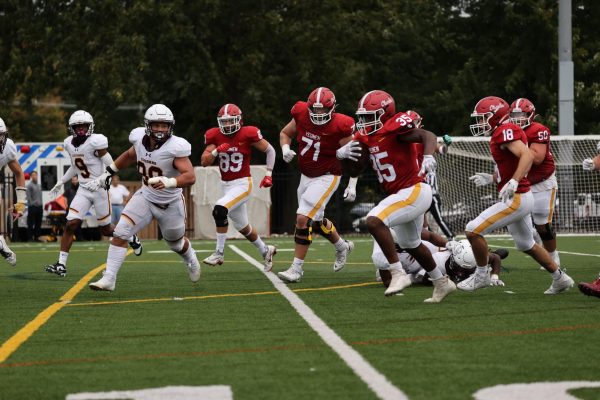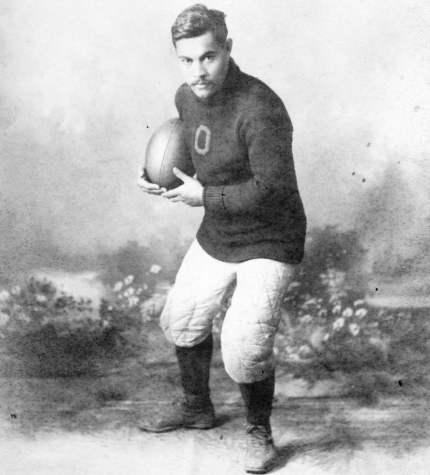Competition, Athleticism, or Something Else Entirely: What Makes A Sport?
Across the globe, people are playing, watching, and interacting with sports on a daily basis. Most children are put on a sports team from an early age and, for some, that initial love of sports never fades. However, despite the fact that sports as a concept is an integral part of society, both at Oberlin and in the world, there is still no general consensus about what a sport really is. There is the mainstream list that includes football, basketball, soccer, baseball, and a few others that are legitimized as sports by the presence of high-profile major leagues and million-dollar television deals at the collegiate and professional levels.
However, a larger portion of potential “sports” exist on the outskirts of the conversation. The inclusion of dance, cheerleading, and gymnastics as sports generates debate, while activities like archery and bowling complicate this issue further. Another question is whether the inclusion on e-sports and poker on ESPN means that these pursuits should also be labeled “sports.”
For some people, sports are defined by those who participate in them. Athletes have to play sports. While this may seem like a clear distinction, in practice it only substitutes one unclear term for another.
“I suppose I don’t see a difference between doing something athletic and being an athlete,” said College fourth-year Matthew Morgan, an aerialist for OCircus!. “Acrobats and aerialists have to be incredibly athletic to do what we do.”
Britt Broadwood, a College second-year and Dance major, agrees that athleticism is a key component for being deemed an athlete.
“Dance is very difficult and requires a lot of athleticism. Like any other athlete, [dancers] have to stretch, condition, and train daily,” she said.
If being an athlete requires doing something athletic, then everyone who participates in a sport would be an athlete. College fourth-year Melvin Briggs, a member of the varsity football team and a dance minor, doesn’t see athleticism as a necessary requirement for being an athlete.
“[Being] an athlete is more about your commitment to something rather than physical ability,” he said.
His beliefs were echoed by first-year volleyball player Iyanna Lewis.
“[An athlete is] someone who dedicates a significant amount of their time to a sport,” Lewis said. “And what they define as a sport is subjective.”
“No, I don’t believe dance is a sport, simply due to the fact that competition is not central to the appeal or practice of dance in the way it is for football, basketball, or baseball,” Broadwood said. Her sentiment was echoed by Morgan.
“I have never personally felt like [OCircus!] claims to be a sport. That said, I do not speak for everyone,” he added. Both pointed toward the performative, as opposed to competitive, nature of their activities as the reason they would not classify what they do as sports. When comparing football and dance, Briggs had similar thoughts.
“I wouldn’t necessarily call [dance] a sport, but it has been useful in [football] and has helped me find my center,” he said. “There are other forms of dance that I believe could be a sport but [I] haven’t been able to take them so I couldn’t personally speak on them.” Briggs also mentioned that several football players at all levels have taken dance classes to help them with their performance on the field over time.
Like dance and football, the benefits that other physical activities have on more-established sports could lead to them being legitimized as sports themselves. However, some see this point of view and the conversation surrounding what qualifies something as a sport problematic.
“I question the significance or relevance of trying to label what specific category it fits into. In questioning if dance is a sport, we’re asking if we should socially legitimize its difficulty,” Broadwood said. Lewis also sees the conversation as problematic for its potential gender bias.
“In general, I think that women’s sports are underlooked and undervalued, especially sports that have a male counterpart,” Lewis said.
The conversation about what counts as a sport is exclusionary in nature and, as with any similar creation of boundaries, some people will be left out. However, even with the potential issues that categorizing activities into sports and non-sports could present, the debate still rages on.
So, with all of this being said, what is a sport?
“What immediately comes to mind is any kind of physical competition,” Morgan said.
His thoughts were supported by Lewis.
“Anything that requires hard work, effort, practice, and competition,” she said, before contradicting Broadwood’s earlier statements. “Even though it may seem easy, usually it has some complexities. Dance is a sport, cheerleading is a sport, and gymnastics is a sport. I don’t care what anyone says.”
At the end of the day, this is a debate that may never have a clear answer. What is clear is that when it comes to physical activity, whether something is or isn’t a sport is not the most important thing to discuss. The way that these activities impact the lives of those who play and participate in them is the key.
Briggs articulated this perfectly, providing an answer to a question that seems to have none.
“When I think about what makes something a sport, I think about the experiences that you can gain,” he said. “I believe that sports are more than activities or competition, but [rather] something that builds character and challenges you to stretch beyond the comfort of normal day-to-day activities.”







